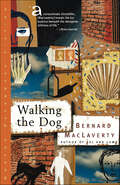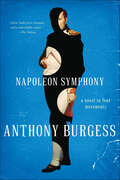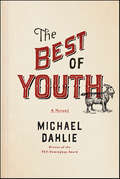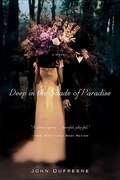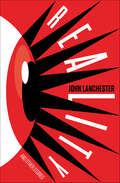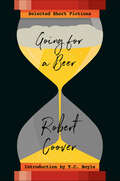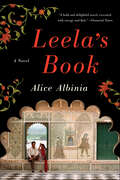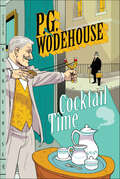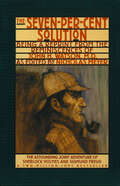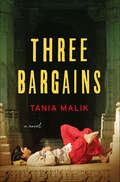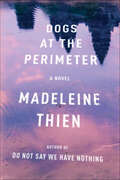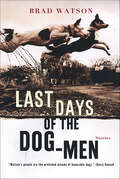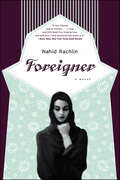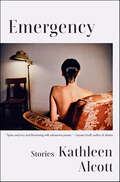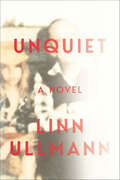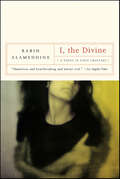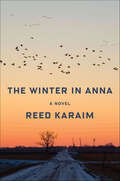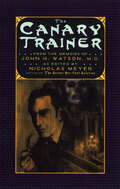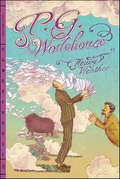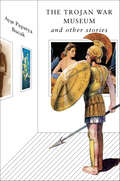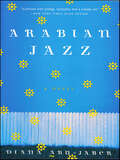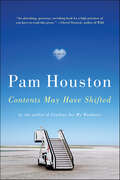- Table View
- List View
Walking the Dog: Stories
by Bernard MacLavertyA rich collection of short stories by one of Ireland's contemporary literary masters. This long-awaited new collection from the noted Irish writer Bernard MacLaverty examines worlds in collision, relationships fragmenting, innocence coming face to face with real life and real death. A Catholic schoolboy playing football has a theological debate with a Protestant policeman; a chess game in Spain is a catalyst for grief and redemption; in the haunting title story a Belfast man out walking his dog is kidnapped at gunpoint. As always, MacLaverty's writing is vivid, exact, and pellucid, his characters perfectly observed, the surface of the prose deceptively still. It is only after we enter the world of the stories that we begin to make out the huge shapes that move there: loss, love, disappointment, fierce joy. This is a powerful, honest, and moving book by one of the great storytellers of our age.
Napoleon Symphony: A Novel in Four Movements
by Anthony BurgessAnthony Burgess draws on his love of music and history in this novel he called “elephantine fun” to write.A grand and affectionate tragicomic symphony to Napoleon Bonaparte that teases and reweaves Napoleon’s life into a pattern borrowed—in liberty, equality, and fraternity—from Beethoven’s Third “Eroica” Symphony, in this rich, exciting, bawdy, and funny novel Anthony Burgess has pulled out all the stops for a virtuoso performance that is literary, historical, and musical.
The Best of Youth: A Novel
by Michael DahlieWhat happens when an introverted young writer takes on a ghostwriting gig for a violent, drug-addicted Hollywood star? In the case of Henry Lang, the result is a string of outrageous disasters, but disasters that are ultimately hilarious, gripping, and deeply moving. When twenty-something Henry Lang loses his parents in a sailing accident, he’s left entirely alone in the world but also with an inheritance of fifteen million bucks. He decides to head to Brooklyn to immerse himself in the place he’s quite sure is the absolute heart of American youth culture to try and make it as a writer and editor at a young upstart literary magazine. He hopes to fall in love too. Unfortunately, Henry soon finds himself navigating increasingly baffling social difficulties with both women and work, eventually leading him to near ruin when he’s hired to ghostwrite a young adult novel. Henry’s integrity and entire fortune are on the line, and no one is sure if he can rescue either.By turns uproarious and tragic, The Best of Youth is a brilliant comedy of manners, introducing us to a surprising modern-day hero for an age where the mean-spirited and the famous triumph all too often.
Deep in the Shade of Paradise: A Novel
by John Dufresne"A comic opera…tuneful, playful." —New York Times Book ReviewIn Shiver-de-Freeze, Louisiana (population 375), friends and family have gathered for the impending nuptials of Grisham Loudermilk and Ariane Thevenot. This will be no ordinary wedding—not when Boudou Fontana, the last of the star-crossed Fontana clan, the conjoined twins Tous-les-Doux, and a host of others are involved.From a writer of rare grace and comic genius comes a “warm, sad, and hilarious ride through the carnival of life” (Dallas Morning News). Rich in character and insight into the vagaries and varieties of love and memory, Deep in the Shade of Paradise is John Dufresne at his funny and thoughtful best.
Reality: And Other Stories
by John LanchesterA Kirkus Reviews Best Short Fiction of 2021 Selection Ghost stories for the digital age by the Booker Prize–longlisted author of The Wall.In 2017, inspired in part by Henry James’ The Turn of the Screw, the acclaimed English novelist John Lanchester published a ghost story in The New Yorker. "Signal," an eerie story of contemporary life and the perils of technology, was a sensation among readers—and since then Lanchester has written several more.Reality and Other Stories gathers the best of these, taking readers to an uncanny world familiar to fans of The Twilight Zone or Black Mirror. Household gizmos with a mind of their own. Mysterious cell-phone calls from unknown numbers. Reality TV shows and the creeping suspicion that none of this is real…Reality and Other Stories is a book of disquiet that captures the severe disconnection and distraction of our time.
Going for a Beer: Selected Short Fictions
by Robert Coover“A mixtape of variations and a fugue on time from a postmodern master.… Familiar tales and conventional genres are made new, tinged with shuddering wonder and titillating humor.” —Yu-Yun Hsieh, The New York Times Book ReviewRobert Coover has been playing by his own rules for more than half a century, earning the 1987 Rea Award for the Short Story as “a writer who has managed, willfully and even perversely, to remain his own man while offering his generous vision and versions of America.” Here, in this selection of his best stories, you will find an invisible man tragically obsessed by an invisible woman; a cartoon man in a cartoon car who runs over a real man who is arrested by a real policeman with cartoon eyes; a stick man who reinvents the universe. While invading the dreams and nightmares of others, Coover cuts to the core of how realism works.
Leela's Book: A Novel
by Alice Albinia"Steeped in the tradition of the Indian epic, yet modern and vastly entertaining." —The Times (London)In her fiction debut, Alice Albinia weaves a multithreaded epic tale that encompasses divine saga and familial discord and introduces an unforgettable heroine. Leela—alluring, taciturn, haunted—is moving from New York back to Delhi. Worldly and accomplished, she has been in self-imposed exile from India and her family for decades; twenty-two years earlier, her sister was seduced by the egotistical Vyasa, and the fallout from their relationship drove Leela away. Now an eminent Sanskrit scholar, Vyasa is preparing for his son’s marriage. But when Leela arrives for the wedding, she disrupts the careful choreography of the weekend, with its myriad attendees and their conflicting desires.Gleefully presiding over the drama is Ganesh—divine, elephant-headed scribe of the Mahabharata, India’s great epic. The family may think they have arranged the wedding for their own selfish ends, but according to Ganesh it is he who is directing events—in a bid to save Leela, his beloved heroine, from Vyasa. As the weekend progresses, secret online personas, maternal identities, and poetic authorships are all revealed; boundaries both religious and continental are crossed; and families are ripped apart and brought back together in this vibrant and brilliant celebration of family, love, and storytelling.
Cocktail Time
by P. G. Wodehouse“Wodehouse is the greatest comic writer ever.”—Douglas Adams A Brazil nut playfully flung through the window of the Drones Club catapults Uncle Fred into action in P. G. Wodehouse’s jab at the publishing industry. An anonymously penned novel about the nut incident has nobody suspecting the culprit and everybody scrambling for the royalties . . . then the movie rights come up for sale.
The Seven-Per-Cent Solution: Being a Reprint from the Reminiscences of John H. Watson, M.D. (The Journals of John H. Watson, M.D. #0)
by Nicholas MeyerNew York Times Bestseller One of Parade's 101 Best Mystery Books of All Time This "rediscovered" Sherlock Holmes adventure recounts the unique collaboration of Holmes and Sigmund Freud in the solution of a mystery on which the lives of millions may depend.First discovered and then painstakingly edited and annotated by Nicholas Meyer, The Seven-Per-Cent Solution related the astounding and previously unknown collaboration of Sigmund Freud with Sherlock Holmes, as recorded by Holmes's friend and chronicler, Dr. John H. Watson. In addition to its breathtaking account of their collaboration on a case of diabolic conspiracy in which the lives of millions hang in the balance, it reveals such matters as the real identity of the heinous professor Moriarty, the dark secret shared by Sherlock and his brother Mycroft Holmes, and the detective's true whereabouts during the Great Hiatus, when the world believed him to be dead.
Three Bargains: A Novel
by Tania MalikA tale of fathers and sons, the ties that bind, and the barriers of class that even love cannot break, Three Bargains is a stunning first novel, as potent, heart-stopping, and epic as Khaled Hosseini's The Kite Runner. By the banks of the River Yamuna in northern India, where rice paddies of basmati merge into fields of sugarcane, twelve-year-old Madan lives with his impoverished family in the town of Gorapur. Madan's father works for Avtaar Singh, a powerful and controlling man who owns the largest factory in town and much of the land around it. Madan's sharp mind and hardened determination catch Avtaar Singh's attention. When Madan’s father's misdeeds jeopardize his sister's life, Madan strikes his first bargain with Avtaar Singh to save her. Drawn into Avtaar Singh's violent world, Madan becomes his son in every way but by blood. Suddenly it looks as if everything will change for Madan and his family until a forbidden love affair has brutal consequences and he is forced to leave behind all that is dear to him. On his journey toward redemption, Madan will have to bargain, once, twice, three times for his life and for the lives of those he loves.
Dogs at the Perimeter: A Novel
by Madeleine ThienThe second novel by the Man Booker Prize shortlisted author Madeleine Thien is "beautiful, deeply moving, [and] addresses universal questions" (Independent).Set in Cambodia during the regime of the-Khmer Rouge and in present day Montreal, Dogs at the Perimeter tells the story of Janie, who as a child experiences the terrible violence carried out by the Khmer Rouge and loses everything she holds dear. Three decades later, Janie has relocated to Montreal, although the scars of her past remain visible. After abandoning her husband and son and taking refuge in the home of her friend, the scientist Hiroji Matsui, Janie and Hiroji find solace in their shared grief and pain—until Hiroji’s disappearance opens old wounds and Janie finds that she must struggle to find grace in a world overshadowed by the sorrows of her past.Beautifully realized, deeply affecting, Dogs at the Perimeter evokes the injustice of tyranny through the eyes of a young girl and draws a remarkable map of the mind’s battle with memory, loss, and the horrors of war. It confirms Madeleine Thien as one of the most gifted and powerful novelists writing today.Finalist for the International Literature Prize and the Hugh MacLennan Prize for Fiction A Canada Reads Top Forty Book A Globe and Mail Best Book
Last Days of the Dog-Men: Stories
by Brad Watson"His people and dogs—those wonderful dogs!—come alive with honest, thrumming energy." —The New York Times Book ReviewWinner of the Sue Kaufman Prize for First Fiction from the American Academy of Arts and Letters and the Great Lakes Colleges Association New Writers AwardIn prose so precise and beautiful it makes a reader's hair stand on end, Brad Watson writes about people and dogs: dogs as companions, as accomplices, and as unwitting victims of human passions; and people responding to dogs as missing parts of themselves. In each of these stories he captures the animal crannies of the human personality -- yearning for freedom, mourning the loss of something wild, drawn to human connection but also to thoughtless abandon and savagery without judgment. Ultimately, however, people are responsible where dogs are not: "I'm told in medieval times," the narrator of the title story tells us, "animals were regularly put on trial, with witnesses and testimony and so forth. But it is relatively rare today." Funny, dark, sometimes brutal, and stunning in their perfection of expression, Watson's stories herald the arrival of a true talent.
Foreigner: A Novel
by Nahid Rachlin"A rare, intimate look at Iranians. . . . I have read [this book] four times by now, and each time I have discovered new layers in it." —Anne Tyler, New York Times Book Review "Nahid Rachlin has an intimate insider's knowledge of present-day everyday Iran — of people and places, houses, streets, and families — and she writes of them with a clarity of perception and style that makes them instantly recognizable and even homely and familiar to the reader." — Ruth Prawer Jhabvala "Rachlin's prose carefully understates and suggests her heroine's awakening to a pervasive atmosphere of menace and sensuality; residue of a culture she thinks she has abandoned, but which continues to claim her." — Bruce Allen, Chicago Tribune "Foreigner gently raises new as well as timeless questions about an unhappy woman's faith and freedom." — The New Yorker "Conveys the texture of extended family, the stress of modernization, the strain of Moslem rigidity as well as the harmony of nature, of dust and carpets, fruits, sweets, tea, fine rice and gossip. Always gossip." — Eden Lipson, "Special Edition," WNET/Thirteen
Emergency: Stories
by Kathleen AlcottOne of The New Yorker's Best Books of 2023 • One of LitHub's 38 Best Books We read in 2023 Longlisted for the Mark Twain American Voice in Literature Award "Best short stories for an instant escape."—Oprah Daily From an “exquisite” (The New Yorker) writer, a searing volume of prizewinning stories starring women facing points of no return. A professor finds a photograph of her deceased mother in a compromising position on the wall of a museum. A twenty-something’s lucrative remote work sparks paranoia and bigotry. A transplant to a new city must make a choice about who she trusts when her partner reveals a violent history. The summer after her divorce from an older man, an exiled painter’s former friends grapple with rumors that she attempted to pass as a teenager.In this long-awaited debut collection, Kathleen Alcott turns her skills as a stylist on the unfreedoms of American life—as well as the guilt that stalks those who survive them. Emergency roams from European cities to scorched California towns, drug-smeared motel rooms to polished dinner parties, taking taut, surprising portraits of addiction, love, misogyny, and sexual power. Confronting the hidden perils of class ascension, the women in these stories try to pay down the psychic debts of their old lives as they search for a new happiness they can afford.
Unquiet: A Novel
by Linn Ullmann“Didionesque.” —New York Times Book ReviewA heartbreaking and darkly funny portrait of the intricacies of family life, Unquiet is an elegy of memory and loss, identity and art, growing up and growing old.
I, the Divine: A Novel in First Chapters
by Rabih AlameddineOne of The Atlantic's Great American NovelsNamed after the "divine" Sarah Bernhardt, red-haired Sarah Nour El-Din is "wonderful, irresistibly unique, funny, and amazing," raves Amy Tan. Determined to make of her life a work of art, she tries to tell her story, sometimes casting it as a memoir, sometimes a novel, always fascinatingly incomplete. "Alameddine's new novel unfolds like a secret... creating a tale...humorous and heartbreaking and always real" (Los Angeles Times). "[W]ith each new approach, [Sarah] sheds another layer of her pretension, revealing another truth about her humanity" (San Francisco Weekly). Raised in a hybrid family shaped by divorce and remarriage, and by Beirut in wartime, Sarah finds a fragile peace in self-imposed exile in the United States. Her extraordinary dignity is supported by a best friend, a grown-up son, occasional sensual pleasures, and her determination to tell her own story. "Like her narrative, [Sarah's] life is broken and fragmented. [But] the bright, strange, often startling pieces...are moving and memorable" (Boston Globe). Reading group guide included.
The Winter in Anna: A Novel
by Reed KaraimThe story of an unlikely and transformative connection forged between a young journalist and a woman whose past holds a terrible secret.A young man, Eric, drops out of college and lucks into a job with a small-town newspaper where he meets Anna—a woman whose story will both haunt and inspire him for the rest of his life. Set in a remote North Dakota community in the last days before the Internet, The Winter in Anna unfolds around a romance that almost was, and a meditation on what constitutes a life well lived. In wistful, moving reflections, Eric looks back on his days with Anna and struggles to reconcile his memories with what he has since learned of her.The Winter in Anna is a stirring and thoughtful novel filled with moments of tenderness, even as it slowly reveals an unbearable tragedy at the heart of a quietly defiant life.
The Canary Trainer: From the Memoirs of John H. Watson, M.D. (The Journals of John H. Watson, M.D. #0)
by Nicholas Meyer"Holmes enthusiasts will again find a story that is true to their hero…Readers who just enjoy a good mystery thriller will appreciate the terse narrative and fast moving action." —Lawrence J. Goodrich, Christian Science MonitorLocated by a computer in the bowels of a major university, this missing manuscript by Dr. John Watson, the biographer of Sherlock Holmes, reveals for the first time a hitherto unknown episode in the life of the Great Detective.The year is 1891, Paris is the capital of the western world, and its opera house is full of surprises. First and by no means least is the sudden reappearance of the great love of Holmes's life, an accomplished singer from Hoboken, New Jersey. Second is the series of seemingly bizarre accidents—each more sinister than the last—allegedly arranged by the "Opera Ghost," an opponent who goes by many names and is more than equal to Holmes. Alone in a strange and spectacular city, with none of his normal resources, Holmes is commissioned to protect a vulnerable young soprano, whose beautiful voice obsesses a creature no one believes is real, but whose jealousy is lethal.In this dazzling sequel to The Seven-Per-Cent Solution, the detective pits wits against a musical maniac, and we are treated to an adventure unlike any other in the archives of Sherlock Holmes.
Heavy Weather
by P. G. Wodehouse“The gardens of Blandings Castle are that original garden from which we are all exiled. All those who know them long to return.” —Evelyn Waugh When Lord Tilbury receives a letter from Galahad Threepwood stating he will no longer be publishing his memoir, he decides to travel to Blandings Castle and steal the manuscript. But he isn’t the only one after the memoir. Sir Gregory Parsloe-Parsloe and Lady Constance Keeble are also trying to lay their hands on it to prevent Ronnie Fish and Sue Brown from getting married. Monty Bodkin, Lord Emsworth’s new secretary, is also after the manuscript in order to secure a year’s employment at the Mammoth Publishing Company. Who will get their hands on the manuscript? Only the Empress of Blandings knows!
The Trojan War Museum: And Other Stories
by Ayse Papatya BucakShort-listed for the 2020 PEN/Robert W. Bingham Prize for Debut Short Story Collection “As profound as it is lyrical. The stories are music.” —Marcela Davison Avilés, NPRIn Ayse Papatya Bucak’s dreamlike narratives, dead girls recount gas explosions and a chess-playing automaton falls in love. A student stops eating, and no one knows whether her act is personal or political. A Turkish wrestler, a hero in the East, is seen as a brute in the West. And in the masterful title story, the Greek god Apollo confronts his personal history to memorialize, and make sense of, generations of war. A joy and a provocation, Bucak’s stories confront the nature of memory with humor and myth, performance and authenticity.
Arabian Jazz: A Novel
by Diana Abu-Jaber"This oracular first novel, which unfurls like gossamer [has] characters of a depth seldom found in a debut." —The New YorkerIn Diana Abu-Jaber's "impressive, entertaining" (Chicago Tribune) first novel, a small, poor-white community in upstate New York becomes home to the transplanted Jordanian family of Matussem Ramoud: his grown daughters, Jemorah and Melvina; his sister Fatima; and her husband, Zaeed. The widower Matuseem loves American jazz, kitschy lawn ornaments, and, of course, his daughters. Fatima is obsessed with seeing her nieces married—Jemorah is nearly thirty! Supernurse Melvina is firmly committed to her work, but Jemorah is ambivalent about her identity and role. Is she Arab? Is she American? Should she marry and, if so, whom?Winner of the Oregon Book Award and finalist for the National PEN/Hemingway Award, Arabian Jazz is "a joy to read…You will be tempted to read passages out loud. And you should" (Boston Globe). USA Today praises Abu-Jaber's "gift for dialogue...her Arab-American rings musically, and hilariously, true."
Contents May Have Shifted: A Novel
by Pam Houston“An absorbing, generous, ravishing book by a high priestess of you-have-to-read-this prose." —Cheryl Strayed, author of WildPam Houston, an "early master of the art of rendering fiercely independent, brilliant women in love with the wrong men" (Sarah Norris, Barnes & Noble Review), delivers a novel that whisks us from one breathtaking precipice to the next. Along the way, we unravel the story of Pam (a character not unlike the author), a fearless traveler aiming to leave her metaphorical baggage behind as she seeks a comfort zone in the air. With the help of a loyal cast of friends, body workers, and a new partner who helps her to be at home, she finally finds something like ground under her feet.
People of the Whale: A Novel
by Linda Hogan"With her unparalleled gifts for truth and magic, Linda Hogan reinforces my faith in reading, writing, living." —Barbara KingsolverRaised in a remote seaside village, Thomas Witka Just marries Ruth, his beloved since infancy. But an ill-fated decision to fight in Vietnam changes his life forever: cut off from his Native American community, he fathers a child with another woman. When he returns home a hero, he finds his tribe in conflict over the decision to hunt a whale, both a symbol of spirituality and rebirth and a means of survival. In the end, he reconciles his two existences, only to see tragedy befall the son he left behind.
The Scribe: A Novel
by Matthew GuinnDetectives Canby and Underwood hunt down a serial killer in this “heady mix of history, sizzle, punch, and danger” (Steve Berry, New York Times best-selling author of The Patriot Threat).Disgraced former detective and Civil War veteran Thomas Canby partners with Atlanta’s first African American police officer, Cyrus Underwood, to track down a serial murderer who seems to be targeting the city’s wealthiest black entrepreneurs. Even after the killer is revealed, his astonishing ability to elude capture raises the question: is there such a thing as supernatural evil at loose in the world? Matthew Guinn draws readers into a vortex of tense, atmospheric storytelling, confronting the fears of both old South and new, compelling the reader through a breathless, disturbing finale.A Los Angeles Public Library Best Book of the Year and a Finalist for the Pat Conroy Southern Book Prize.
Country of Origin: A Novel
by Don LeeA dazzling debut novel by the prize-winning author of Yellow, set in the unique and exotic nightworld of Tokyo. In this "poignant story of prejudice, betrayal and the search for identity" (Newsweek International), the trials and tribulations of these three remarkable characters are "at turns trenchantly funny and heartbreakingly sad" (Publishers Weekly). "[An] elegant and haunting debut" (Entertainment Weekly), Country of Origin is a "swirl of action, a whirl of love and sex and race and politics, local and international" (Chicago Tribune)—a "quiet literary triumph" (Booklist) Lisa Countryman is a woman of complex origins. Half-Japanese, adopted by African American parents, she returns to Tokyo, ostensibly to research her thesis on Japan's "sad, brutal reign of conformity." When she vanishes, Tom Hurley, who is half-Korean and half-white, is assigned to her case at the American embassy, as is local cop Kenzo Ota, who is 100 percent Japanese but deemed an outsider.
